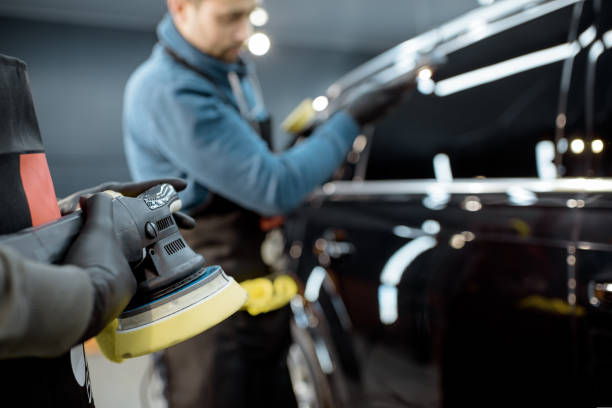
Repainting a car without sanding is not generally recommended if you’re aiming for a professional, long-lasting finish.
Sanding is a step in the preparation process for several reasons…
1. Adhesion
Sanding creates a rough surface that helps the new paint adhere better to the car’s body. Without sanding, the new paint might not stick well, leading to peeling, flaking, or chipping over time.
2. Smoothness
Sanding helps to smooth out imperfections, scratches, and dents on the car’s surface, ensuring that the new paint job looks even and professional. Skipping sanding means these imperfections will likely be visible through the new paint.
3. Removing Old Paint and Rust
Sanding is for removing old, deteriorating paint and any surface rust. Painting over rust or damaged paint without removing it first can cause the rust to spread and the paint to fail prematurely.
Alternatives to Traditional Sanding
If your main concern is the labor-intensive nature of sanding, there are some alternatives that might reduce the effort but not completely eliminate the need for surface preparation:
- Liquid Sandpaper (Deglosser) – This chemical solution can be used to prepare the surface for painting by removing gloss and slightly etching the surface for better paint adhesion. It’s not as effective at removing imperfections or dealing with rust.
- Scuffing – Using a scuff pad to lightly abrade the surface can be an option if the existing paint is in good condition and you’re not changing the color dramatically. This method is less labor-intensive than full sanding but still provides some mechanical adhesion.
Considerations for Skipping Sanding
- Type of Paint – Some modern paints and primers are designed to adhere to surfaces without sanding. The effectiveness can vary, and it’s to follow the manufacturer’s recommendations closely.
- Temporary Solutions – If you’re looking for a temporary fix or a quick aesthetic improvement with less concern for longevity, you might opt to skip sanding. Be aware that the finish might not be as durable or smooth.
Conclusion
While it might be tempting to skip sanding to save time or effort, doing so can compromise the quality and durability of your paint job. For the best results, proper surface preparation, including sanding, is advisable. If you’re looking for less labor-intensive methods, consider alternatives like liquid sandpaper or scuffing, but set your expectations accordingly regarding the finish and longevity of the paint job.




